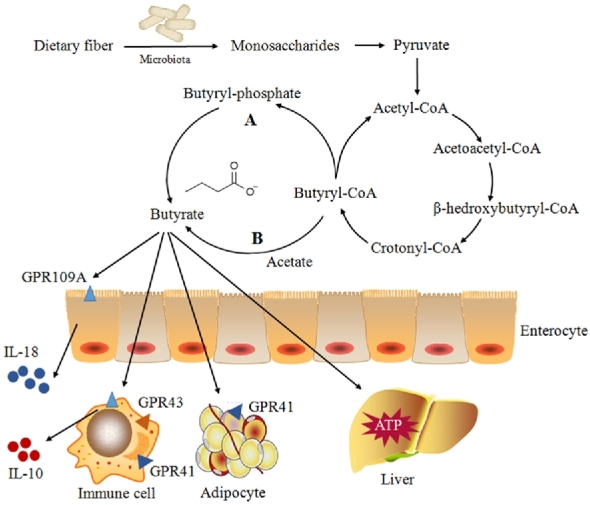FIGURE 1.

Butyrate biosynthesis and absorption in the large intestine and subsequent metabolism. Two pathways of endogenous butyrate production from butyryl-CoA in bacteria have been reported. The letter “A” indicates that butyryl-CoA is phosphorylated to butyryl-phosphate and converted to butyrate via butyrate kinase. The letter “B” shows that the CoA moiety of butyryl-CoA is transferred to external acetate via butyryl-CoA:acetate CoA transferase, leading to the formation of butyrate and acetyl-CoA. Several receptors for butyrate have been identified, including GPR41, GPR43, and GPR109A. GPR41 is found in adipose tissues and immune cells. The highest expression of GPR43 has been found in immune cells, whereas GPR109A is essential for butyrate-mediated induction of IL-18 in colonic epithelium. A small portion of butyrate is transported to the liver and metabolized to produce ATP. GPR, orphan G protein–coupled receptor.
